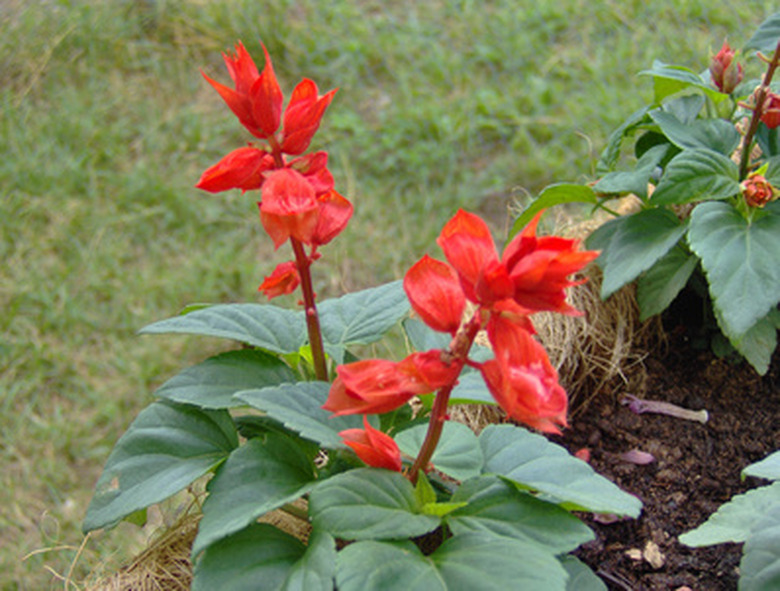How To Companion Plant Salvia
The types of salvia include blue salvia, autumn sage, meadow sage and scarlet or lilac salvia. Most make great companion plants because of their hardiness and drought tolerance. Consider the characteristics of your specific salvia plant when looking for good companion plantings. Salvias are also often recommended as companion plants for larger, taller or showier flowers or plants like roses or irises. Different varieties of salvia have different cold hardiness ratings and sun requirements, so be sure you are choosing plants that all grow well in similar conditions. Also consider the different colors and heights of salvia when planning your landscape design.
Step 1
Match companion plants to your zone. For instance, annual blue salvia does best in southern zones 6 through 8. Perennial salvias will grow in zones 3 or 4. If you are choosing plants to be companions to existing salvia, check that they will do well in your local climate.
- The types of salvia include blue salvia, autumn sage, meadow sage and scarlet or lilac salvia.
- If you are choosing plants to be companions to existing salvia, check that they will do well in your local climate.
Step 2
Check sun and soil requirements. Salvias usually like light, partial shade to full sun. Plants that like continual full sun or deep shade won't make good companions. Soil also should be well-drained and not clay, but it doesn't have to be rich.
Step 3
Try similar plants. Salvia often has attractive foliage or flowers, and other flowering plants go well with it. These include verbena, dahlia, zinnia, Shasta daisy, petunia, marigold, goldenrod, day lilies, daffodils, coreopsis and others that enjoy sunny locations and well-drained soil. Consider the different colors of salvia when you are choosing companions, too.
- Check sun and soil requirements.
- Salvia often has attractive foliage or flowers, and other flowering plants go well with it.
Step 4
Choose plants that, like salvia, attract butterflies, bees and other pollinators. Lilies, orchids and sweet-scented flowers in a companion planting with salvia will create an excellent pollinator garden.
Step 5
Draw a garden plan on graph paper, and choose plants for height, color and size. If you have tall perennial salvias, plan to place them at the back of a planting, rather than at the front border. If your salvia is a low-growing variety, plant in circles in the front of a bed, backed by spikier plants like goldenrod.
